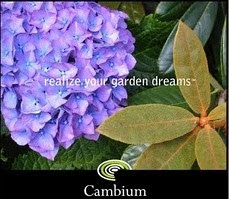
In my first article on food, I advocated for local farmers' markets, and I still believe that they are a great resource for local organic foods. In this article however, I'd like to get a little more local. And what could be more local than your own neighborhood and your own backyard? In every neighborhood in the city, there are urban gardeners growing food. There are trees producing plumbs, cherries, apples, pears and other fruits and nuts. There may even be a few chickens in your neighborhood - scratching around, improving the soil and producing eggs. The neighborhood foodshed is the sum of all these elements. It is technically defined as a local food production and distribution system intended to produce locally without the use of fossil fuels or exchange of money. Though this definition portrays an ideal system that not only produces food, but also fosters development of the community, I think the definition could be expanded to include all food produced within a geographic area.
So how does an urban gardener get to know their neighborhood foodshed? The process starts by getting to know your neighborhood. First, determine the geographic boundaries of your neighborhood. Then begin surveying the area. What fruit trees are present and where? Who are the gardeners in the area? Is there a P-patch garden in your neighborhood? How about invasive clumps of Himalayan blackberries? Get to know your neighbors and find out whether they’d be interested in sharing food or whether they have land they would be willing to share for the purpose of food production. Through getting to know your neighbors, you may find that there are people that may not have the ability to cultivate their own garden, but they may be willing to lend you a prime piece of farmland in return for a share of the harvest. This concept of landsharing is a great way for the urban gardener to increase the amount of land they can cultivate while improving the local environment and increasing production within the neighborhood foodshed.

Once you get to know your foodshed, the next step is to get organized. A great way for gardeners to share their crops is by periodically holding their own neighborhood farmers’ market in someone’s garden or driveway. This could be a great time to bring the community together – maybe even have a potluck dinner and exchange excess crops with neighbors that may need what you have too much of. Creation of a cooperative neighborhood foodshed is a great way to build community while increasing the productive value and sustainability of our urban neighborhoods.

The neighborhood foodshed is usually made up of a collection of microfarms.
A microfarm is defined as any small food producing operation. From your backyard garden to a five acre parcel in the exurbs raising cattle, to a gourmet organic garden focused on supplying food to local restaurants, microfarms comprise the bulk of food production in urban areas. As the presence of microfarms expands, some entrepreneurial farmers are setting up Community Supported Agricultural co-ops in urban areas. These urban CSA’s are bringing urban food production to another level by employing the CSA model and incorporating the concept of landsharing.

If you don’t yet have a vegetable garden and you’d like to start growing your own food, but you don’t know how to (or don’t want to) go through the process of installing a vegetable plot, there are companies popping up all over the country to help you get started. For a reasonable price, you can have a garden consultant come out and evaluate your property to determine what the most appropriate spot for a vegetable plot might be. Then, they can build a vegetable bed, install irrigation and even plant the garden for you. Some companies even offer a full-service option. They’ll show up once a week, tend the garden for you and leave a basket of the week’s harvest on your doorstep.
The benefits of having your own microgarden go beyond the wonderful experience of eating freshly picked vegetables from your yard. Having a productive garden can also teach children about food, how it grows and the value of hard work. I think you’ll find that your microgarden also helps foster the connection between you and your land – a connection that is all too often missing in our urban lifestyles.

If you’re interested in supporting the urban foodshed, but engaging and building up your own neighborhood foodshed seems like a monumental task that you’re just not able to take on right now, I suggest starting with your own microgarden or by supporting an urban CSA. There aren’t too many urban CSA’s around Seattle right now, but as the movement toward local, organic and sustainable consumption progresses, there are sure to be more sprouting up all over the city.
The urban garden can be many things - from a display garden of beautiful perennials to a relaxing patio retreat. Add food production and coordination between neighbors to the mix and the urban garden can become another step toward a stronger, more sustainable community.


























 For much of the season, this shrub is a fairly pedestrian occupant of the garden. It really won't impress you with its flowers or leaf color, but the colorful payoff is great in the long, dark days of the winter.
For much of the season, this shrub is a fairly pedestrian occupant of the garden. It really won't impress you with its flowers or leaf color, but the colorful payoff is great in the long, dark days of the winter.

